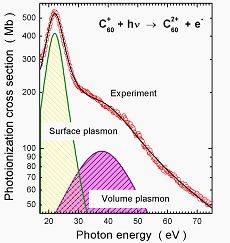
Figure 1: Absolute photoionization cross-sections for C60+ ions.
Photoexcitation of collective electron oscillations in C60 ions
S. W. J. Scully, E. D. Emmons, M. F. Gharaibeh, R. A. Phaneuf
University of Nevada, Reno, NV, U.S.A.
A. L. D. Kilcoyne, A. S. Schlachter
Advanced Light Source, Lawrence Berkeley National Laboratory, Berkeley, CA, U.S.A.
S. Schippers, A. Müller
Institut für Atom- und Molekülphysik, Justus-Liebig-Universität, Giessen, Germany
H.S. Chakraborty, M. E. Madjet, J. M. Rost
Max-Planck-Institut für Physik komplexer Systeme, Dresden, Germany
Because of its size, structure and symmetry, the properties and behavior of C60 are intermediate between those of a free molecule and a solid, making possible the collective excitation of electrons. Neutral C60 is known to exhibit a giant resonance in its photon absorption spectrum near 20 eV. This is associated with a surface plasmon oscillation, where the 240 delocalized valence electrons oscillate as a group relative to the ionic cage [1].
A monochromatized beam of synchrotron radiation from an undulator was merged with beams of C60 ions from a small accelerator at the Advanced Light Source. The photoionization process was studied by measuring the absolute yield of photo-ions as a function of photon energy. Photoionization cross-section measurements for C60+, C602+ and C603+ ions in the 17-75 eV energy range each reveal an additional broad resonance centered near 40 eV [2].
Figure 1 presents the absolute cross-section measurements for single photoionization of C60+ ions, along with a fit of two Lorentzian functions. The first resonance near 22 eV corresponds to the surface plasmon excitation observed for neutral C60 [1]. Calculations based on time-dependent density-functional theory confirm the collective nature of the second broad resonance feature near 40 eV. This is characterized as a dipole-excited volume plasmon oscillation, made possible by the special fullerene geometry of a charged spherical shell [2]. The charge density oscillates over the width of the electron shell, producing a compression of the electron density that is local with respect to the C60 sphere.
The ratios of the measured resonance energies to their widths provide estimates of the stability of these collective electron oscillation modes. The data indicate that for photoexcitation of C60+, C602+ and C603+ ions, the surface plasmon excitation survives for 2-3 oscillation periods before decaying by ejecting an electron, whereas the volume plasmon survives on average for only a single period. The energies and widths of these resonance features are essentially independent of the initial ion charge state, consistent with the fact that plasmon oscillations depend solely on the electron density.

References:
[1] G. F. Bertsch, A. Bulgac, D. Tomanék and Y. Wang, Phys. Rev. Lett. 67, 2690 (1991).
[2] S. W. J. Scully, E. D. Emmons, M. F. Gharaibeh, R. A. Phaneuf, A. L. D. Kilcoyne,
A. S. Schlachter, S. Schippers, A. Müller, H.S. Chakraborty, M. E. Madjet and J. M. Rost,
Phys. Rev. Lett. 94, 065503 (2005).
This work was supported by the
Chemical Sciences, Geosciences and Biosciences Division,
Office of Basic Energy Sciences,
Office of Science,
U.S. Department of Energy.
Submitted to ICPEAC, July 2005 in Rosario, Argentina.
This abstract is also available in Adobe Acrobat format.
| Return to do another abstract search of all our holdings. |
|
|